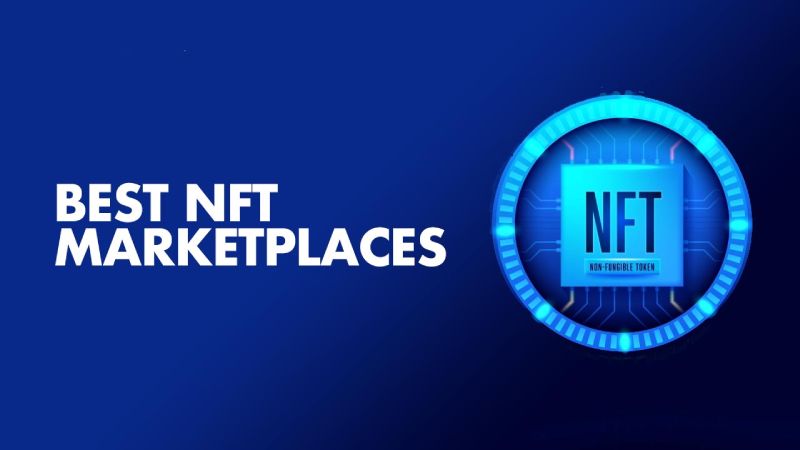How To Create An NFT Marketplace like OpenSea & Rarible

NFT Marketplaces
It’s not just about the files in the current NFT development initiatives. NFTs, like all commodities, require a market to buy and sell them. Some NFT markets combine a user-friendly front-end environment for viewing and brokering files with a user-friendly back-end environment. They’ll also require a well-designed backend that supports blockchain technology.
There are both front-end and back-end considerations if you want to start your own Whitelabel NFT marketplace. For markets, NFT developers must construct a UX that makes it simple to find requested files and a back-end procedure that handles challenging transactions seamlessly.
Table of Contents
An Introduction To NFT Marketplace Development
NFT developers have been actively building markets for these files as their popularity develops. Some contemporary markets provide general trading platforms. Other online marketplaces specialize in high-end art or data relating to specific online games or niche topics.
A list of popular NFTs :
- Digital Artwork
- Music
- Clips
- GIFs
- Photos
- Tweets
- Games
- Domains
- Tokens
- Licenses
Development Process & Features
1. Frontend or Web Portal
An e-commerce site is similar to an NFT marketplace. It necessitates an appealing and user-friendly front-end storefront. For each file, the administrator must determine how much information to display. NFT customers, like real art collectors, will want to know about the provenance and validity of their data.
They also require a list of their NFTs’ rarity. While it is not possible to copy a private NFT, artists can distribute many NFTs of the same artwork.
2. Search and Filter Feature
When creating your own NFT marketplace, you’ll need to decide what kind of files you’ll be trading. Several of the first marketplaces, such as OpenSea, are broad markets that accept any NFT. Newer marketplaces frequently focus on a certain niche. Whatever you sell on your website will require an inquiry tool to expedite the purchasing process.
3. Sorting with Filter Feature
Search filters are used in a variety of ways to improve the buyer’s experience. Collectors and investors have various standards when it comes to NFTs. Users should be prepared to sort items based on factors such as price, rarity, and artist.
4. Listing
Both buyers and sellers must have a favorable experience in the NFT marketplace. When someone needs to list a file, well-designed NFT programming gives a clear step-by-step process. The marketplace should have clear upload instructions as well as forms for selling data.
5. Update/Delete and Status Features
In an NFT markets negotiation, both parties want to know about the mechanism. The marketplace can provide information to buyers and sellers such as the proportion of people who have viewed the file and the number of bids received during an auction. When someone makes a proposal, the location might also notify them. Before making a purchase, buyers want to know that a file has undergone a thorough verification process. Collectors value verified things more than unverified items.
6. Purchasing and Auctioning
NFT developers can provide a variety of selling options for your website. Timed auctions are sometimes used by popular artists to obtain the easiest pricing because the competition can quickly enhance the value. In any case, the back-end work for an auction is more difficult than for regular sales. Bidding can be fierce, especially near the end of the auction, so the site must provide real-time information about the method.
Buying and selling directly may be a more straightforward process. In any case, using smart contracts on the blockchain necessitates more development than typical e-commerce payment gateways.
7. Wallet
Consumers who are tech-savvy are just as anxious about the security of their crypto wallets as they are about the security of their other financial data. Users should be able to figure out their trending crypto wallet solutions using a substitute NFT marketplace.
8. Evaluations
Both buyers and sellers can benefit from ratings. People who have a good reputation are more likely to try to conduct business with them. A scoring system can also avoid unwanted behaviors such as fraudulent representation or transaction withdrawing before the smart contract takes effect.
What Are NFTs And How Does It Work?
Despite the fact that they have been around since 2014, NFTs are now gaining popularity as a popular way to buy and sell digital artwork. The birth of cryptocurrencies was witnessed by the whole world in 2017. NFTs are a type of data, specifically blockchain-based digital files, but it is important to note that the token owner has access to any copy of the original file. NFTs representing digital files are tracked on their main block and provide customers with proof of ownership of the NFT, despite the fact that the digital files themselves are infinitely repeatable.
- Make an NFT and fill in all of your selected parameters.
- Wait for the moderation process to be completed before listing your digital products for sale.
- When auctions take place, buyers place their bids.
- The marketplace transmits cryptocurrencies and digital products after auctions are completed.
How To Build An NFT Trading Platform Like OpenSea?
Now that you know what NFTs are and how OpenSea works, you can create your own NFT marketplace similar to OpenSea. Empire Global can assist you with the entire process of setting up the market. If you want to build it from the ground up, here are some basic steps to take:
- Choose the appropriate blockchain.
- Determine who your target audience is.
- Create a suitable user interface for the NFT Marketplace.
- Define operational domain.
- Token selected.
- Create a smart contract.
- The market is being tested and deployed.
- Alternatively, you can use the OpenSea clone. OpenSea Clone Scrip is a ready-to-use script to launch your own P2P NFT Marketplace.
The following are a few of the most well-known NFT Marketplaces.
- OpenSea
- Rarible
- SuperRare
- Foundation
- AtomicMarket
We will be explaining one for you over here.
OpenSea Marketplace :
The OpenSea Marketplace is an online marketplace that allows you to buy and sell non-fungible tokens from well-known artists, as well as amateurs, are available for purchase on NFT marketplaces. There are plenty to choose from that you can do on OpenSea. It is the world’s first and largest digital marketplace for crypto collectibles and non-fungible tokens. It began operations in 2017 with a $2 million seed round. In April 2021, the company raised an additional $23 million with the help of Andreessen Horowitz’s venture capital fund.
On any sales made through the OpenSea system, NFT sellers pay a 2.5% commission. Sellers must first create an account, then create Collections, upload their work, and list it for sale.
How OpenSea Market Place Works
Generally, OpenSea allows two parties to securely exchange digital items without the need for mutual trust or a centralized authority. Each NFT’s unique contract is stored on the Ethereum blockchain, which is a peer-to-peer network. The OpenSea system is available to buyers for free. To get started, simply create an account and browse the NFT collections. If you already have a crypto wallet, connect it and you’re ready to start learning about NFTs. Buyers of NFTs can use OpenSea for free.
Therefore, it is important to look out for an NFT marketplace development expert who can assist you in establishing a successful NFT marketplace. They will work with you throughout the full NFT development process. They can create a user-friendly front-end that works for both customers and artists once you understand the project’s scope. If you want to create your own NFT marketplace, then keep an eye out for the skilled developers who can help you do it.
ALSO READ: Online Trading: Everything You Need To Know







